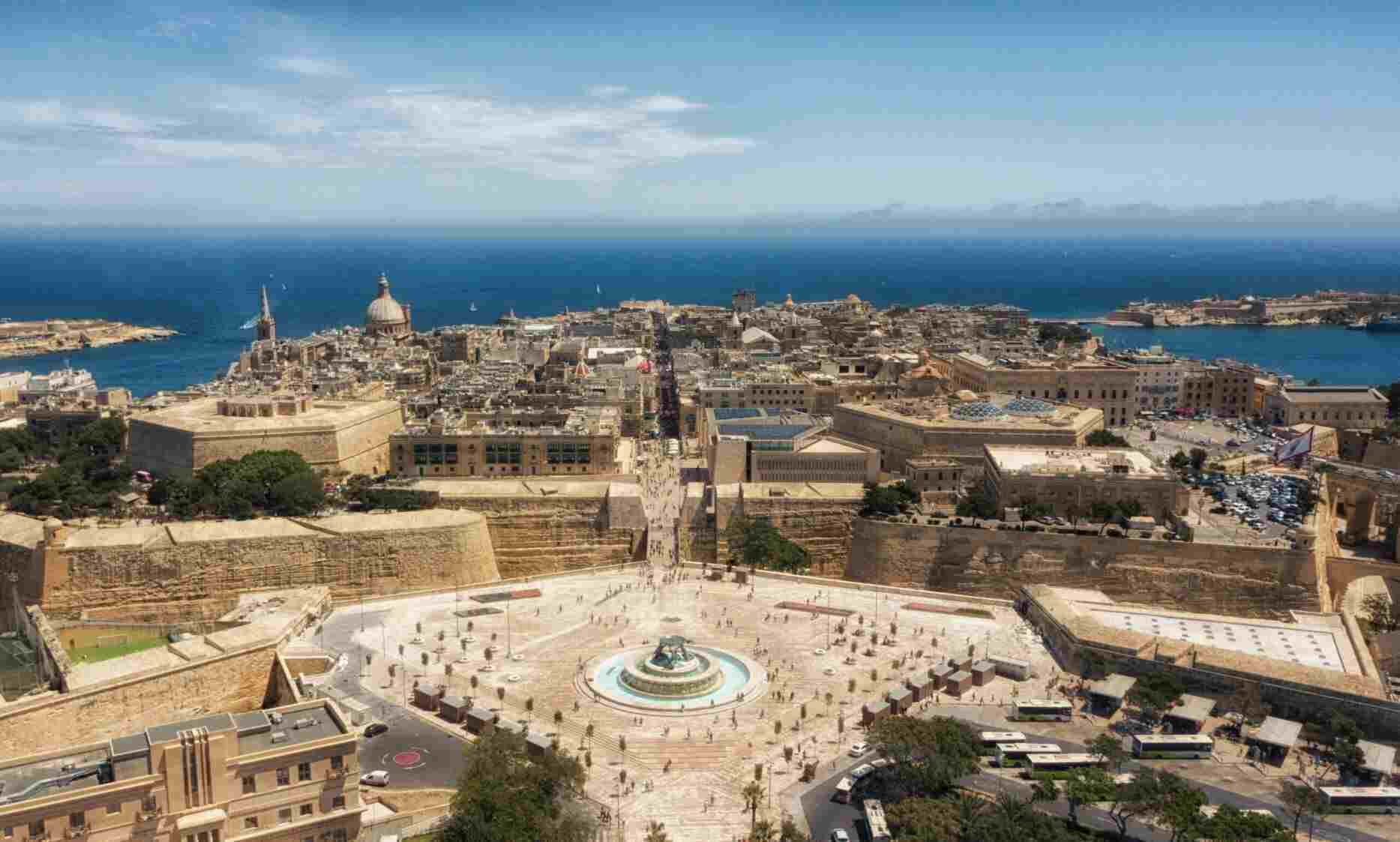
Central Bank of Malta issues commemorative coins featuring Gozos Citadel
August 17 2024 14:10 by PCLMedia
The Central Bank of Malta has issued a commemorative €2 coin and a silver coin, both themed around Gozo's Citadel (Cittadella) in Rabat Victoria.
During the launch of these coins, Minister for Gozo and Planning Clint Camilleri thanked the leadership of the Central Bank of Malta for this initiative, in which the Citadel was chosen as the first site in the theme of fortified Maltese cities to appear on the €2 coin.
Camilleri said that the Citadel is a popular site for anyone visiting the island of Gozo. "The massive investment made to restore the Citadel to its former glory has truly paid off. This has also been appreciated by the European Union itself, as in 2022, this restoration and regeneration project won the RegioStars Awards," he said.
Camilleri said that every effort is being made to ensure that the Citadel continues to be enjoyed and gains more recognition. "This is precisely why the Ministry accepted the Central Bank of Malta's invitation, and today we are launching these two coins, which will further elevate the prestige of this ancient city in the heart of Gozo," Camilleri said.
Acting Governor of the Central Bank of Malta Alexander Demarco said that every year, the Bank issues two commemorative coins, and it was fitting that the Citadel be featured on this year's coin. "As a country, we should truly be proud of the heritage we possess, and I appeal for it to continue to be preserved, conserved, and passed on to future generations," Demarco said.
The Citadel in Victoria, Gozo: Malta's Historical Jewel
The origins of the Citadel, known locally as "Ċittadella" or "Il-Kastell," trace back to the Bronze Age, around 1500 BC, when the site was likely a prehistoric settlement. Over the centuries, it evolved under various rulers, including the Phoenicians, Romans, Byzantines, Arabs, and finally the Knights of St. John. Each civilization left its mark, contributing to the Citadel's architectural and cultural fabric.
During the Roman period, the Citadel became a significant urban center, with evidence of a thriving community and infrastructure. However, it was during the medieval period that the Citadel assumed its current form. The Knights of St. John, who ruled Malta from 1530 to 1798, recognized the strategic importance of the Citadel and fortified it extensively to protect the island's inhabitants from Ottoman and pirate raids.
The Citadel's fortifications were essential for the Gozitans, who sought refuge within its walls during times of invasion. The Citadel served as the island's main defense, and its elevated position provided a commanding view of the surrounding countryside and coastline, allowing defenders to spot approaching enemies from afar.
As you enter the Citadel, the first thing that strikes you is the imposing main gate, which was rebuilt by the Knights in the 17th century. The gate leads into a labyrinth of narrow streets, winding alleys, and ancient buildings that tell the story of Gozo's past. The Citadel is home to several key landmarks, each with its unique charm and historical significance.
The Cathedral of the Assumption is the crown jewel of the Citadel. Built between 1697 and 1711, this baroque masterpiece was designed by the Maltese architect Lorenzo Gafà. The cathedral stands on the site of an earlier medieval church and is famous for its stunning interior, particularly the trompe-l'œil ceiling that gives the illusion of a dome, which the church lacks. The Cathedral Museum, adjacent to the church, houses a collection of religious artifacts, including silverware, vestments, and paintings.
The Old Prison, located near the main gate, offers a fascinating glimpse into the Citadel's past. This small, medieval prison was used by the Knights of St. John and features graffiti carved into the limestone walls by prisoners over the centuries. The graffiti includes ships, crosses, and other symbols, providing a poignant insight into the lives of those who were incarcerated here.
Another notable site within the Citadel is the Gozo Museum of Archaeology, which traces the island's history from the prehistoric era to the early modern period. The museum's exhibits include artifacts from the Ġgantija Temples, one of the oldest freestanding structures in the world, as well as Roman and medieval relics.
One of the highlights of visiting the Citadel is the panoramic view from its ramparts. From this vantage point, visitors can enjoy breathtaking views of Gozo's rolling hills, terraced fields, and the Mediterranean Sea beyond. On a clear day, it's possible to see the island of Malta to the southeast and the island of Comino to the east. The view alone is worth the visit, offering a serene and picturesque backdrop that contrasts with the Citadel's rugged fortifications.
The Citadel also plays a central role in Gozo's cultural life. Throughout the year, it hosts various events, including historical reenactments, festivals, and concerts. These events bring the Citadel to life, allowing visitors to experience the island's traditions and heritage in a vibrant and engaging way.
In recent years, significant efforts have been made to preserve and restore the Citadel. Extensive restoration work has ensured that this historical site remains accessible and well-maintained, allowing future generations to appreciate its historical and architectural value.
Today, the Citadel is not just a relic of the past but a living part of Gozo's identity. It continues to attract visitors from around the world who come to explore its ancient streets, learn about its history, and soak in the stunning views. The Citadel is a reminder of Gozo's resilience, a symbol of its cultural heritage, and a testament to the enduring spirit of the Gozitan people.
Contact IMEX Malta

